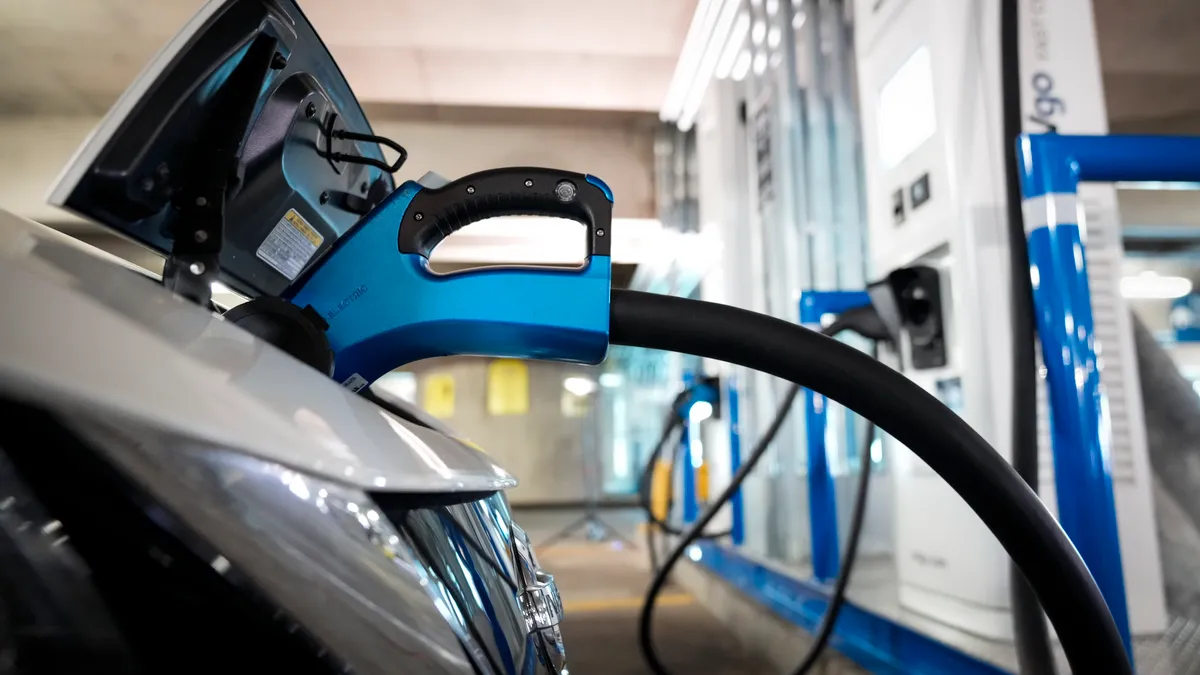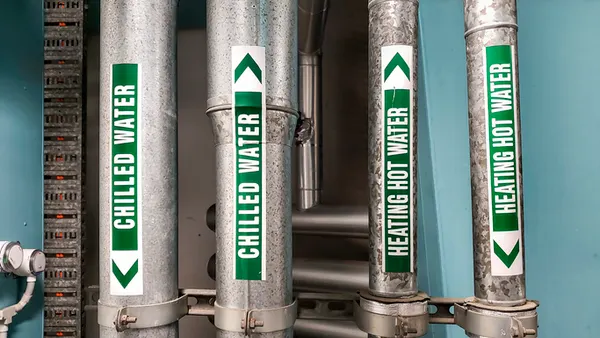Dive Brief:
- Rising loads associated with electric vehicle charging will begin to stress the power grid over the next few years, and a three-year initiative by the Electric Power Research Institute aims to ease the electric transition.
- EVs2Scale2030 will launch in June to develop a timeline of anticipated EV loads down to the distribution circuit level, along with processes and tools to help standardize the interconnection and serving of new transportation loads, said EPRI Director of Transportation Britta Gross.
- The initiative is “all about addressing the problems of getting to scale, and then sustaining scale when we get there,” Gross said. Among the tools to be developed is a “handshake” data exchange to help align plans to add EV chargers with the grid’s hosting capacity.
Dive Insight:
Electrification of the transportation sector could add more than 130 billion kWh of demand to the nation’s grid by 2050, according to the the U.S. Energy Information Administration. The electric sector will have decades to meet that demand, but in the near-term experts say possible constraints need to be addressed.
“Even at a relatively slower pace of getting started ... there can be some challenges on the grid,” Gross said.
At its highest level the grid has plenty of excess capacity, she said. “The question is exactly the point where you have trucks and cars parked. Is that feeder capable of supporting a new transportation load?”
EVs2Scale2030 aims to answer that question. The initiative was among a slate of new private and public sector investments in the electric transportation sector announced Monday by the White House. President Biden has set a goal for half of all new vehicle sales to be electric by 2030 and the Environmental Protection Agency has proposed federal emissions standards that could help exceed that goal.
EPRI’s intiative will bring parties together to ask “what prevents them from scaling up? Let's make sure that we are taking a look at what we understand to be all the barriers,” Gross said.
The EVs2Scale2030 advisory board represents broad interest among stakeholders in the utility sector, she said. There are more than a half dozen utilities representing investor-owned, municipal and rural cooperative providers. The advisory board is led by Brett Carter, an executive vice president at Xcel Energy, and Patti Poppe, CEO of Pacific Gas & Electric. Daimler Trucks is an external advisor.
EPRI estimates there will be about 40 million electric cars and trucks on U.S. roads by 2030, if the nation is on pace to hit Biden’s target.
“That's a lot of load in different areas on the grid,” Gross said. “What's the roadmap between today and 2030? On what feeders in the United States, in 2023, 2024, 2025? At that level of granularity, where are the truck loads, the medium-duty trucks and the light-duty vehicles? When do those loads start hitting a Memphis area distribution circuit, or Orlando?”
“We've got to have these conversations years in advance, not three months in advance,” Gross said.
EPRI’s initiative will frame the problem, consider how standardization can ease the interconnection of millions of new points of load, and develop tools like a secure dataset that will work as a “handshake” between entities developing charging loads and the utilities which serve them.
It will be a “handshake between what they're planning to do and what the electric power industry has available,” she said. “How can we meet each other in the middle and be more transparent about what's coming to my local grid.”
The White House also called out Xcel Energy and PG&E iniatives in its Monday announcement.
Xcel, with Colorado Car Share, has committed to launching an electric car sharing program for underserved and high emissions communities in that state by the end of this year. PG&E and Ecology Action committed to install approximately 2,000 charging ports at no cost to customers in underserved communities by 2025.













